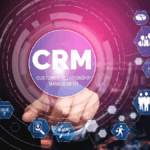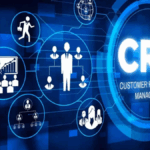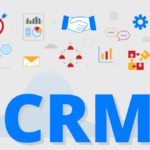In today’s hyper-competitive business landscape, intuition isn’t enough. To grow consistently, businesses need to rely on data-driven decisions—and one of the most powerful tools for unlocking actionable insights is your Customer Relationship Management (CRM) system.
Modern CRMs do more than manage contacts or automate emails—they provide rich analytics that help businesses understand customer behavior, optimize sales and marketing strategies, and predict future trends. By leveraging CRM analytics, companies can make smarter choices that directly impact growth.
Here’s how using CRM analytics can supercharge your business growth:
Understand Customer Behavior in Real-Time
CRM analytics provide a complete view of how customers interact with your brand—across channels, stages, and touchpoints.
With CRM analytics, you can:
- Track website visits, email opens, purchases, and customer service interactions
- Identify high-value customers based on lifetime value
- Monitor where leads drop off in your sales funnel
Benefit: Real-time visibility helps you adjust messaging, optimize workflows, and deliver better customer experiences—faster.
Segment Your Audience for Personalized Campaigns
Segmentation is the key to effective marketing. CRM data allows you to break down your audience into meaningful groups based on demographics, behavior, purchase history, and more.
Examples of audience segments:
- New leads vs. repeat buyers
- Dormant customers who haven’t purchased in 6 months
- Customers interested in a specific product category
Result: Highly targeted campaigns with higher engagement rates, better conversions, and lower marketing costs.
Optimize Your Sales Pipeline
CRM analytics can give you deep insight into your sales pipeline, helping you understand where deals are getting stuck and how to improve conversion rates.
Key sales metrics to track:
- Lead response time
- Average deal size and sales cycle length
- Win/loss ratios by salesperson or campaign
Use case: If analytics reveal that leads from social media convert faster than other sources, you can shift more resources toward social campaigns to accelerate growth.
Forecast Revenue Accurately
CRM platforms use historical data, AI, and trend analysis to forecast future revenue and sales performance. This is critical for budgeting, inventory planning, and investor reporting.
Benefits of accurate forecasting:
- Smarter resource allocation
- Reduced inventory waste or stockouts
- Proactive planning for seasonal or promotional peaks
Knowing what’s coming helps you scale operations smoothly and stay ahead of demand.
Improve Customer Retention
Keeping customers is cheaper than acquiring new ones—and CRM analytics can help you understand what drives loyalty or churn.
Analytics to monitor:
- Customer satisfaction scores (CSAT)
- Support ticket volume and resolution time
- Repeat purchase frequency
Actionable tip: If you notice a drop in satisfaction after a new product launch, you can proactively address issues before losing customers.
Measure Campaign Performance with Precision
Marketing is no longer a guessing game. CRM analytics can measure the ROI of every email, ad, or campaign—right down to individual customer actions.
Track performance metrics like:
- Email open and click-through rates
- Conversion rates by channel
- Cost per lead or acquisition
Result: You can double down on high-performing strategies and cut off underperforming ones—boosting ROI with data-driven refinement.
Align Sales, Marketing, and Customer Support
When all teams access the same analytics dashboard, alignment improves. Sales knows which leads are ready to close, marketing sees which messages resonate, and support can anticipate customer needs.
Benefits of unified analytics:
- Better internal communication
- Faster response times
- Improved customer satisfaction
This cross-functional alignment drives stronger, more consistent growth.
Conclusion
Data is one of the most valuable assets your business owns—and CRM analytics help you unlock its full potential. By tracking the right metrics and translating insights into action, you can refine strategies, improve customer relationships, and drive sustainable growth.











